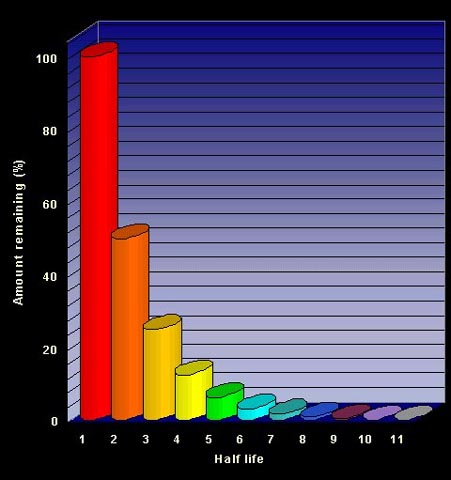
Geologic Time (Part 3)
Absolute Dating
• The most common technique for determining an absolute age of a geologic material uses radioactivity.
• Radioactivity occurs because some naturally occurring elements are unstable. These elements break down or decay at known rates from “parent” atoms to “daughter” atoms. Uranium is a parent to the daughter lead, for example.
• By measuring the amounts of parent and daughter atoms in the rock and applying the known decay rates, an absolute age of the rock can be determined.

(Diagram by Phyllis Newbill)
Radioactive materials decay in half-lives. If 100 pounds of a material with a half-life of 500 years is deposited, then 500 years later, 50 pounds will remain. 500 years after that, 25 pounds will remain. By comparing the amount of the parent material to the amount of the daughter material, geologists can determine how old radioactive material is. This chart shows what percentage of a radioactive material will remain after certain numbers of half lives. Notice that the amount comes close to zero, but never actually reaches it.